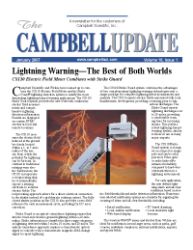Historically, on dataloggers such as the CR10X that used mixed-array data storage, the CS I/O port accommodated mostly modem-enabled (ME) peripherals. More recently, the CS I/O port (on dataloggers such as the CR1000, which now use table data storage and the PakBus® communication protocol) can support both ME and newer synchronous-device-communication (SDC) addresses, which greatly enhance device communication. More peripherals can be connected to the datalogger and data is transferred much faster.
For peripherals that can work in either mode, the transition from an ME device to an SDC device requires that you change settings in the peripheral. Some of our newer peripherals will have SDC mode as their default setting beginning in March. Therefore, if you will be connecting one of these devices to our historic dataloggers, you may need to modify the default settings before they will work properly. For most peripherals, you can easily change the settings of your existing peripherals by using the Device Configuration software utility (DevConfig) or by changing a jumper or dip switch setting. DevConfig is included with LoggerNet, PC400, or PC200W, and is available as a download from our Web site.
Peripherals that can be configured for ME or SDC modes using DevConfig include the NL100, RF401 (and variations), MD485, SC-USB, and SC105. One of our new peripherals, the COM220, is configured using an internal dip switch. By incorporating this capability within the devices, peripherals can be migrated into systems using newer dataloggers.

